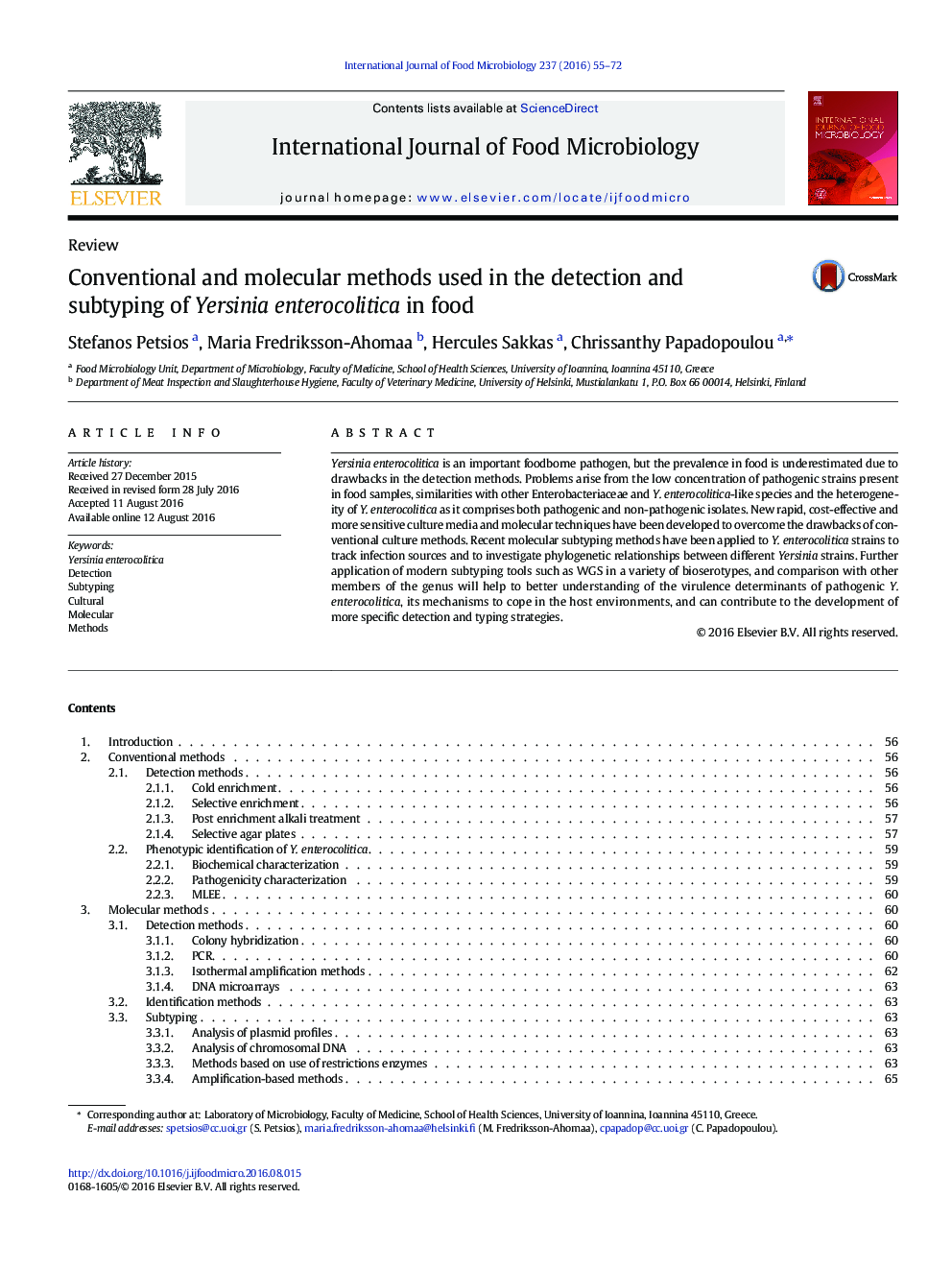| Article ID | Journal | Published Year | Pages | File Type |
|---|---|---|---|---|
| 6289712 | International Journal of Food Microbiology | 2016 | 18 Pages |
Abstract
Yersinia enterocolitica is an important foodborne pathogen, but the prevalence in food is underestimated due to drawbacks in the detection methods. Problems arise from the low concentration of pathogenic strains present in food samples, similarities with other Enterobacteriaceae and Y. enterocolitica-like species and the heterogeneity of Y. enterocolitica as it comprises both pathogenic and non-pathogenic isolates. New rapid, cost-effective and more sensitive culture media and molecular techniques have been developed to overcome the drawbacks of conventional culture methods. Recent molecular subtyping methods have been applied to Y. enterocolitica strains to track infection sources and to investigate phylogenetic relationships between different Yersinia strains. Further application of modern subtyping tools such as WGS in a variety of bioserotypes, and comparison with other members of the genus will help to better understanding of the virulence determinants of pathogenic Y. enterocolitica, its mechanisms to cope in the host environments, and can contribute to the development of more specific detection and typing strategies.
Related Topics
Life Sciences
Agricultural and Biological Sciences
Food Science
Authors
Stefanos Petsios, Maria Fredriksson-Ahomaa, Hercules Sakkas, Chrissanthy Papadopoulou,
